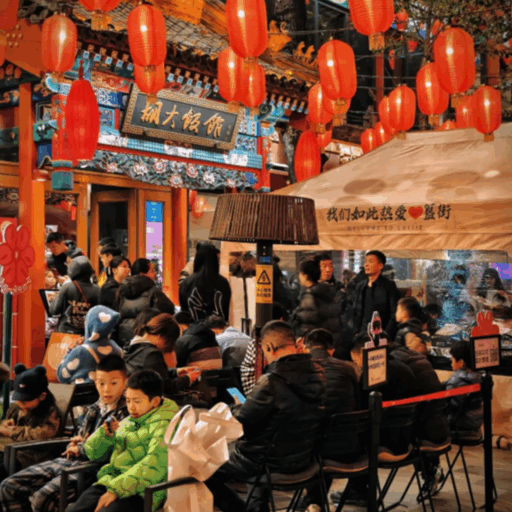How excited are you to discover the culinary magic hidden in Beijing's streets? This ancient city is known for its stunning architectural structure and cultural places to visit, but with its rich cultural heritage, it’s a utopia for food lovers. Food chains starting from Beijing’s street food skillfully blend savory snacks, delicious meals served in time-tested restaurants, and further places in Beijing offer a taste that cannot be found in any other city. We’ll guide you through Beijing’s cuisine and culinary history, where food isn’t just consumed; it’s something exciting, full of innovation, amazing creativity, and wondrous traditions. The city is full of sights and places that will make a trip you'll never forget. Don't forget to try Jason's Beijing duck, who knows how he challenges other modern takes on dishes with a flawless touch. Attempting to indulge your hunger while imagining new cities to roam around will get your wanderlust ignited.
What are the most unique things to do in Beijing for first-time visitors?
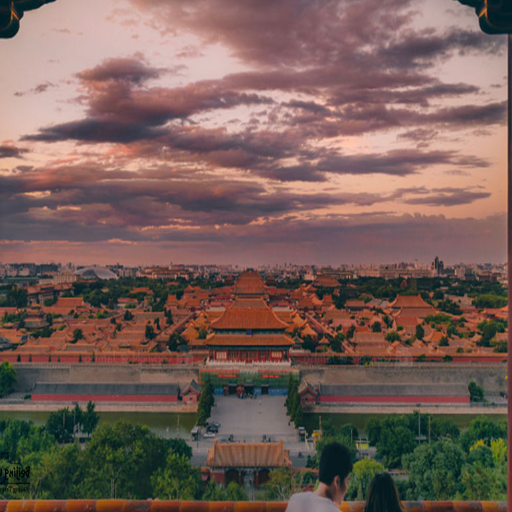
Discovering The Forbidden City: A Majestic Site of the Ming Dynasty Era
The Forbidden City is the astonishing architectural embodiment of Beijing’s historical and political legacy. This masterpiece was constructed in the early 15th century by Emperor Yongle of the Ming dynasty. The sprawling complex served as the imperial palace and was home to 24 emperors of the Ming and Qing dynasties for over 500 years. The palace includes 1,000 buildings and encompasses 8,700 rooms, which incorporate traditional Chinese designs, bright carvings, and paintings.
The grand halls, such as the Hall of Supreme Harmony, give visitors a chance to bask in the glory of imperial ceremonies and get a closer look at the intricate symbolism of golden rooftops and red walls. The overwhelming Architecture within the Forbidden City not only complies with the ancient teachings of feng shui, which promote harmony, but is also highly aesthetic. The City is also home to a wide assortment of treasures and historical artifacts showcased in the Palace Museum alongside ancient Chinese artifacts, calligraphy, ceramics, and court luxuries, which offer a glimpse into the court’s lavish life.
A trip to the Forbidden City takes you back in time to the Ming dynasty; it combines history with reality. It will be particularly interesting for first-time visitors. Still, it's essential to do thorough planning in advance because even a small part of the exploration can take a significant amount of time. To truly experience and appreciate the magnificence of this landmark and one of the many UNESCO World Heritage Sites, visitors should make an effort to spend a few extra hours taking in the intricate details of history and artistry embedded within, making it a valid symbol of Beijing.
Walking the Great Wall of China: Mutianyu section for fewer crowds
To the northeast of Beijing, approximately 45 miles away, is the Mutianyu section of the Great Wall. This part of the Great Wall caters to those seeking a more tranquil experience, away from crowds, while still appreciating the wall's architectural and historical significance. It is renowned for its stunning scenery; The wall is surrounded by lush and serene forests and rolling hills. The panoramic views offer stunning changes through the seasons; vivid greens in summer, warm hues in autumn, and a winter wonderland when covered in snow.
Mutianyu’s section variety is different due to its accessibility and family-friendly features. The site offers something for all ages and abilities, including a cable car that goes straight up to the Wall and a fun toboggan ride down the Wall for an exciting descent. Although the Wall itself can be steep, the moderate slopes of this section accommodate a broad range of visitors. Moreover, the lower number of visitors means that you can appreciate the history and beauty of this world-famed structure without feeling rushed or stressed.
Whether it's admiring the 22 watchtowers located around this stretch or just thinking about the incredible feat of engineering and manual work this architecture required, the Mutianyu section is well-balanced between beauty and history, while also providing a unique sense of calm.
Exploring the authentic experiences the courtyard provides in Beijing's ancient hutongs
The huge ancient hutongs of Beijing hold great value to the culture and history of Chinese civilization. These narrow pathways with traditional courtyard homes provide insight into the way of life of the natives over the past centuries. The alleys and courtyards are interwoven with each other, bringing unmatched beauty to Beijing and a distinct narrative. The alleyways also provide insight into the lives of locals, as they are home to family-operated dumpling shops, small tea houses, and boutique stores, catering to and representing the true spirit of ordinary people.
The modernization of Beijing has dramatically affected the old parts of the city. The Jinshan section and Shichahai nodes cater to people who want to experience China's eastern culture, whereas the modern retail outlets in other locations facilitate a smoother transition between cultures. In addition, the unique dining customs and spirit of the locals greatly give the tourists an ambiance unlike any other. The siheyuan provides an opportunity to engage with the locals deeply. The spirit of the people makes the alleys feel enchanted.
Where can I find the best authentic food experiences in Wangfujing?

Wangfujing Snack Street: An Adventurous Eater's Guide To Snacks In Beijing
Wangfujing Snack Street is a true gem of a culinary delight, not only for its residents but also for international tourists. Set in one of Beijing's shopping districts, this street is filled with stalls that offer beautiful and creative versions of traditional Chinese snacks. For people who are looking to try new things, Snack Street offers famous Beijing delicacies like tanghulu (Chinese hawthorn), deep-fried scorpions, suannai (fermented yogurt), and jianbing (Chinese savory crepes).
Snack Street not only offers strange treats, such as deep-fried scorpions, but also serves more traditional foods like dumplings and stuffed buns. The blend of bold local flavors makes every vendor's food intriguing. This rich diversity of foods available makes Wangfujing Snack Street a treasure to behold. Food lovers and tourists alike should take a stroll down Wangfujing Snack Street and enjoy treats from both East and West.
Beijing roast duck restaurants: Where locals eat Peking duck
No gourmet quest in Beijing is complete without savoring the city’s iconic dish, Peking duck, one which locals and tourists relish. Though many eateries offer this crispy delight, there are a few that are among the preferred choices for Beijing citizens due to their authenticity and preparation methods.
From the numerous options, people prefer Quanjude, a restaurant chain that has been serving Peking duck since 1864. With utmost care, Quanjude roasts duck meat in an open-flame oven using wood from fruit trees. The result is delicate duck meat balanced with perfectly crisp skin, garnished with traditional add-ons like hoisin sauce, along with thin pancakes and julienne-cut cucumbers.
Downtown, as you search for hidden gems tucked away across the side streets, Bianyifang is another popular choice. Founded in the 14th century, Bianyifang stands out with its “closed oven' roasting technique, giving it a unique duck taste and tenderness. The restaurant distinguishes itself by striving to keep up with the changing times while remaining true to age-old traditions, creating an inviting ambience for those looking to enjoy authentic Peking duck and soak in the cultural atmosphere of Beijing.
The locals also praise Siji Minfu, a new establishment that has quickly garnered acclaim for its affordable prices and quality ingredients. Siji Minfu offers a mix of tradition and dining modernization with excellent service and a contemporary yet traditional atmosphere. The establishment prides itself on blending both forward-thinking and age-old practices.
If you’d like to explore off the beaten track, the small local Peking duck restaurants hidden within hutongs serve freshly roasted duck with secret family recipes. While these little-known places may lack the splendor of famous restaurants, they offer excellent authenticity and intimacy rarely found anywhere else. To put it simply, if you’re looking for Peking duck while experiencing the actual life of a Beijinger, traveling to these local hotspots will be particularly rewarding.
Hidden gems: Where to eat authentic dishes outside the tourist areas
For travelers from around the world and food lovers alike, looking to experience familiar local tastes, going off the beaten path and away from tourist areas can be an interesting way to explore. In Southeast Asia, for example, Rot Fai Market in Thailand or Jonker Street in Malaysia are famous night markets that serve traditional street food. Locals and tourists alike can relish dishes such as pad kra pao and nasi lemak, among many others, on the go. Similarly, tucked-away trattorias in Italy, such as those in the less-touristed parts of Naples or Bologna, provide visitors with freshly made pasta and pizzas cooked over wood burners using age-old recipes.
Back on the continent, small, family-owned hotels and rural inns located in European villages are like a well-kept secret for culinary enthusiasts, as they serve hyper-local ingredients prepared traditionally. Not only does that give you the chance to try the specialty food of the location, but you also get to know the region's history, making these family-run establishments a must-visit. The lesser-known areas of the world, or the so-called hidden gems, are bound to leave you amazed by the culinary artistry from different parts of the world.
What cultural attractions in Beijing can I visit in half a day?
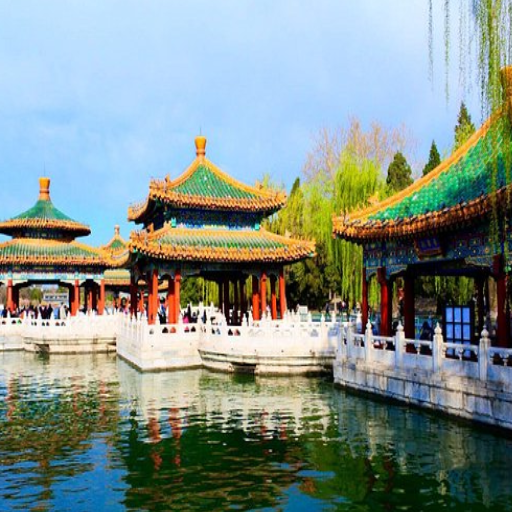
Temple of Heaven: Chinese culture and imperial rituals
Strikingly located in the center of Beijing, the Temple of Heaven is a remarkable site that highlights and preserves China's ancient imperial civilization and spiritual culture. Hailed as a UNESCO World Heritage Site, it was built in 1420 during the Ming Dynasty, where Ming and Qing emperors performed sacred rites to pray for bountiful harvests. The entire temple complex spans roughly 267 hectares, with a layout that exemplifies the union of heaven and earth.
Some of the most notable features are the wooden vaulted ceiling, where Good Harvests are prayed for, known as the Hall of Prayer for Good Harvests, and the famed Echo Wall, renowned for its astounding acoustics. Also, the Circular Mound Altar, made only of white marble, showcases the ancient Chinese philosophy of cosmology. The Temple enthralls the visitors with its stunning architecture and axial symmetry, as well as ceremonial calm, which has encouraged centuries of ritual and contemplation. Even today, it serves as a cultural site of great importance, capturing the attention of both foreign tourists and residents who wish to appreciate its historical value and serene beauty.
Lama Temple: The Most Important Buddhist Temple in Beijing
The Lama Temple, also known as Yonghe Temple, is a glorious work of Tibetan Buddhist art with influences from Han Chinese culture. It was initially built in the Qing Dynasty in 1694 and turned into a lamasery in 1744. Since then, it has been one of China's most important centers of Buddhism. Occupying approximately 66,400 square meters, the temple complex features five primary halls, multiple courtyards, and temples adorned with intricate carvings, murals, and religious artifacts, all ingeniously constructed and serving as the centerpieces of the complex.
The temple boasts a wide variety of attractions, including the renowned 18-meter-tall statue of Maitreya Buddha, made of white sandalwood. Bearing the title ‘Traditional Buddhist Artisan’s Masterpiece’, the sculptor is recognized by the Guinness World Records. The Lama Temple continues to be actively utilized as a place of worship where practitioners and tourists alike can burn incense, offer prayers, and learn about Buddhism. This indicates that the Temple serves as a mix of historical, cultural, and spiritual essence, a must-visit in Beijing.
Jingshan Park: Best views of the Forbidden City in one place.
Jingshan Park is a beautiful imperial garden, best known for its stunning panoramic views of the capital's scenery and the Forbidden City, positioned directly north of it. This park was part of the Chinese imperial capital, serving as a symbol of harmony and balance within its surroundings. Jingshan Hill is located at the center of the park. This artificial hill was formed by dirt taken out during the construction of the Forbidden City’s moat. Wanchun Pavilion is located at the summit of the mountain. The breathtaking view of the city’s golden rooftops is very captivating from the Wanchun Pavilion, especially at sunset or sunrise.
The park has an extensive coverage area bordered with ancient pines and cypress trees, in addition to seasonal blossoms. Jingshan Park also holds historical significance as it is the site where the Emperor Chongzhen ended his life. The park has been transformed into a cultural and historical venue where locals can leisurely walk, practice Tai Chi, or cultivate and enjoy the flowers, creating a coexistence of nature and historical charm. Both tourists and locals attend the park, making it one of the must-see parks in Beijing.
How to experience local Beijing life beyond the typical tourist attractions?
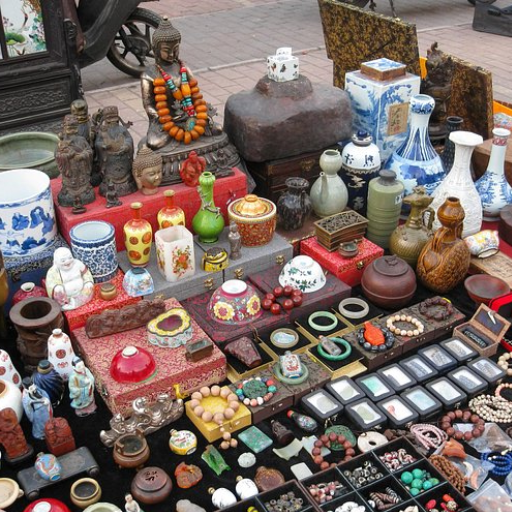
Beijing's antique markets: Hunting for Treasures and Souvenirs
The antique markets of Beijing are unique for those intrigued with history, art, and craftsmanship. One of the most famous destinations is the “Ghost Market,” also known as Panjiayuan Antique Market, which is a blend of vintage jewelry, paintings, ceramics, cultural relics, and many more. Indeed, there is and will always be a place for creativity in Chinese jewelry artifacts and other items have astonishing attention to detail and profound historical importance.
This century-old street is filled with antique jade, rare books, calligraphy brushes, and inkstones. An ethereally peaceful ambiance is bound to erase the chaos of the modern world with a touch of Chinese artisan spirit. Whether you're looking for some bric-a-brac or collecting hard-to-find pieces, Beijing's antique markets are in a class of their own when it comes to selling items of historical significance.
Beihai Park: Unwind the same way locals do at this imperial garden
Visitors are welcomed into Beihai Park in the heart of Beijing amidst centuries of history, as it provides a peaceful getaway from the busy streets. This lush expanse, originally built as an imperial garden over a thousand years ago, showcases the sophistication and grandeur of Chinese garden design. The central aspect of this park is the beautiful Beihai Lake, which offers opportunities for quiet boat rides and occupies over half of the park's total area. Surrounding the lake, you can find ancient tree groves, decorative pavilions, and traditional rockeries. Meticulously landscaped paths wind through all of them, treasuring the beautiful blend of nature and artificial architecture.
The White Dagoba, a striking Tibetan-style stupa, is one of the park's most iconic landmarks and can be found crowning Jade Flower Island. The structure, built in the 17th century to commemorate a visit from the Dalai Lama, stands today as a spiritual and architectural marvel. There are steps constructed for visitors that allow them to get panoramic views of the park and the rest of the Beijing skyline from the top of the island.
Apart from its fascinating history, Beihai Park serves as a cultural hub where people can meet, practice tai chi, play various instruments, or enjoy Chinese operas. If you want solitude or vigorous cultural activity, you can find that at the Beihai Park - it truly is a place of wonder.
Visiting other historic attractions near Tiananmen Square
As one of the largest public squares in the world, Tiananmen Square holds tremendous historical and political meaning to China. This square is approximately 109 acres in size and serves as one of the most critical assembly areas in China. Being surrounded by important historical sights, this landmark deepens the visitor’s understanding of the world, China’s history, and their perspective on modern life.
Directly north of the square stands the Tiananmen Gate, also known as the Gate of Heavenly Peace, which served as an entrance to the Forbidden City and has remained a salient monument to China’s imperial heritage. Other famous buildings also mark Hero Square. One of them is the Monument to the People's Heroes, a giant granite obelisk that commemorates the heroes who sacrificed their lives for China's independence. Next to this is the Mausoleum of Mao Zedong, where people can visit the body of the father of the People’s Republic of China.
Other parts of the square are remarkable tourist attractions. The Great Hall of the People, which is located to the West, is the seat of the People’s Republic of China’s legislature and features captivating Soviet architecture. The Museum of Chinese History is located in the East and is devoted to the great and ancient art and culture of China. Each of the mentioned places contributes to the country's rich and diverse history.
Exploring Tiananmen Square is more than just a tour of its important landmarks. It's an opportunity to immerse yourself in the depth of China's history and contemporary life. Whether admiring its stunning buildings, contemplating its significant events, or just enjoying the energy of the expansive area, Tiananmen Square offers an unforgettable experience.
What are some must-do activities in Beijing for food enthusiasts?
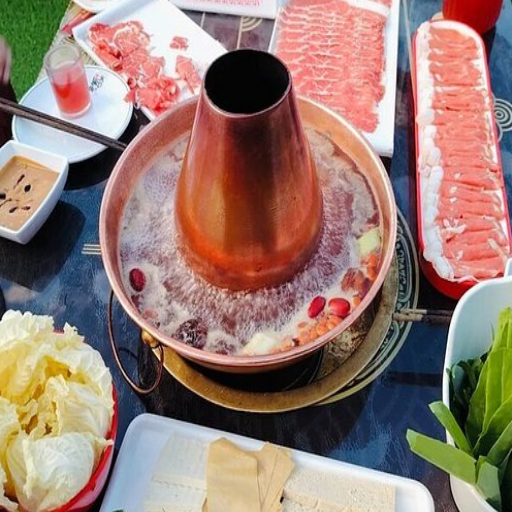
You haven’t been to Beijing until you have tried their Peking Duck.
For any food lover, having Peking duck in Beijing is a must. This dish is one of a kind, having gone through centuries of refinement. From its sweet and tender meat to the crisp duck skin, it truly showcases culinary art. When I went to Beijing, the highlight of my trip was visiting one of the specialty Peking duck restaurants, and trust me, the experience was worth the money. The transformation of the chefs preparing it out in the open was something like an art show. They served the duck deliciously, and the presentation took my breath away.
Beijing’s food markets were also interesting. The savory Chinese crepes and Zhajiangmian are both dishes I badly wanted to try. Wangfujing also has a special snack street where lamb kebabs and sugar-coated hawthorns are sold, both of which taste phenomenal. During my trip, I took a closer look at Beijing's vibrant culture and its incredible culinary masterpieces, and I can gladly say that this city has a special spot in my heart.
To get a genuine feel for the place, I also went to a local restaurant for handcrafted dumplings and participated in a traditional dim sum breakfast. The artistry behind Beijing cuisine was evident in the intricate dishes. No matter the occasion, whether it's fine dining or stumbling upon a hidden street vendor, Beijing ensures that every meal has the potential to become an everlasting experience.
Experiencing Mongolian Hotpot: The Best Of The City
Beijing was truly remarkable when it came to indulging in hotpot, my favorite dining custom that marries comfort food with social dining. I was able to embark on a research and personal exploration journey that uncovered some exceptional places to indulge in this amazing dish, along with my hotpot cravings. A must-visit restaurant is Dong Lai Shun! Being famous for their authentic lamb hotpot, it was truly unforgettable. Their thinly sliced lamb paired alongside various dipping sauces was unrivaled. The rich scent and robust flavor that came from the lamb, cooked in the bubbling copper pot, were unparalleled.
Another fantastic restaurant I liked is Hai Di Lao, known for its modern decor and customization options for hot pot. The service there was as good as every other place I visited, and the hotpot options were impressive. Their broth variants, such as spicy Sichuan and mushroom-infused, paired well with fresh ingredients and innovative blends.
I moved on to the Qianmen region for an experience that was more local and unique. At Jiumen Xiaochi, I came across smaller exits that served Mongolian hotpot with a twist. The place was a hit with locals, which added a nice touch to the restaurant's vibe. Every spot I visited while having Mongolian hotpot in Beijing added something new to the experience, which is what made it special.
Wangfujing food excursions: From traditional to unusual provisions
Wangfujing is not only a food lover's paradise, but also a place that offers everything under the sun. As I walked through the busy street, I was greeted with the scent of deeply rooted Beijing delicacies such as tanghulu (candied hawthorn) and jianbing (savory Chinese crepes). These classic dishes celebrated the essence of the capital’s cultural heritage, a blend of history and modernity that drew from Beijing’s traditional spirit, which originated in the heart of the city.
The culinary options available at Wangfujing are what make it stand out from the rest. Among scorpions, seahorses, and starfish skewers that were offered at the bustling night market vendor stalls were some of the most memorable. While these Beijing ingredients may not suit everyone’s taste, they provided a captivating insight into China’s unusual food culture and embraced the adventurous spirit of the place. The atmosphere at Wangfujing was fascinating, and it was more than just those intriguing delicacies. It was full of buzz, and alive with the voices of people and vendors, and it felt as if different cultures and flavors were blending for a lively celebration. My visit was an astonishing mix of the remarkable and the customary, so Wangfujing is truly a heaven for food enthusiasts.
Frequently Asked Questions (FAQs)
Q: What magnificent activities can I partake in as a tourist in Beijing Today?
A: Activities such as hot-pot dinners at the well-known Dong Lai Shun, viewing Kung Fu performances, or strolling through districts like Nanluoguxiang enable visitors to Beijing to enjoy the pleasant weather while shopping in trendy stores. Additionally, the rich history of hutongs, the majesty of the Summer Palace, and the renowned Wangfujing pedestrian street give Beijing a unique touch. Places like the 798 Art District allow contemporary Chinese art lovers to visit galleries and museums that showcase modern Chinese art. Regarding your question about kung fu, rest assured, it is performed live for visitors in the city. During each visit to Beijing, visitors can expect a blend of modern amenities and ancient traditions.
Q: Should I visit the Summer Palace in Beijing?
A: Definitely yes. The Summer Palace offers a breathtaking view and is one of the must-visit places in Beijing. Also known as a summer resort for royalty in Germany, this location is famous for its stunning man-made lakes, gardens, and palaces from the Qing dynasty era. The construction offers a bay view, and blending natural and architectural structures makes the Summer Palace a sight worth seeing. For those who are profound admirers and photographers, capturing photographs is bliss in the summer, providing exposure to reveal all four sides. Even though it can be a challenge to visit in the summer, the rest of the seasons offer exposure to this renowned UNESCO site. You can easily spend a few hours strolling through the pavilions, along the long corridor, and walking around to capture the beauty.
Q: How does traveling through a Beijing hutong give me insight into the city?
A: The ancient alleyways which are home to courted houses (siheyuan) are not only a must-visit when in Beijing, but also a unique opportunity to experience urban life in traditional Chinese ways. Unlike the soaring high-rise buildings, these ranges of ancient alleyways reveal the city's rich cultural heritage, which is often hidden. You will learn a lot about everyday life and local cuisine by exploring the local food stalls, “forgotten” temples, little shrines, and shops that are found everywhere in the non-touristy areas. Like Nanluoguxiang, where old buildings and traditional houses stand alongside modern cafés and boutiques. Most visitors to Beijing claim that the hutong feel is one of the most essential parts of the whole journey, revealing an intimacy far beyond what any shopping center or futuristic landmark can provide.
Q: What makes the 798 Art District a unique place in Beijing to visit?
The 798 Art District is distinct when compared to other areas in Beijing because it is located in a combination of disused military factories that have been transformed into thriving centers of contemporary art. This industrial art area features international-standard galleries, installations, and exhibitions within industrial buildings of a conventional Bauhaus style. Here, one can spot famous Chinese artists as well as newer ones, set in the stylish cafes, design shops, and bookstores. The district hosts many events and festivals, which provide a conducive platform for China's highly creative side, a sharp contrast to the ancient historical places in Beijing.
Q: When is the best time to visit Beijing's Bell and Drum Towers?
A: For the best experience at The Bell and Drum Towers, try to arrive from 9 am to 11 am. This will allow you to beat the influx of tourists and help you enjoy the Bell Tower's open view of the Drum Tower's panoramic views of the adjoining Hutong neighborhood below. Also, make sure to visit the towers during the summer expansion, so you can also benefit from the cooler weather. To enjoy the very best views, try to arrive in the late afternoon. This is also the best time to enjoy the sunset while snapping pictures of these structures in Yuan, Ming, and Qing dynasty-styled architecture. The Drum Tower features periodic drumming performances throughout the day. Visitors can enhance their experience by visiting the Drum Tower at 9:30 am, 10:30 am, 11:30 am, 1:30 pm, 2:30 pm, 3:30 pm, or 4:30 pm to enjoy the performance.
Q. What are the main differences in terms of tourism in Shanghai and Beijing?
A. Visitors can expect entirely different experiences in Shanghai and Beijing. As China’s capital for centuries, Beijing showcases its ancient imperial history and political centers, including the Forbidden City, Temple of Heaven, and sections of the Great Wall. The city focuses on traditional Chinese culture, ancient architecture, and a rich multicultural heritage that stems from different dynasties. Shanghai symbolizes modern China with its ever-growing skyline, international atmosphere, and urban lifestyle. Though Shanghai offers contemporary luxury, shopping, and nightlife, Beijing has more depth in history and traditional experiences - including Peking duck at Quan Ju De, Tibetan Buddhist temples, and more. It is recommended to visit both cities to grasp the country’s past and present, but if you enjoy history and traditional culture, prioritize your trip to Beijing.
Q: Which day trips from Beijing allow me to explore China's historic treasures?
A: You can plan some fantastic day trips from Beijing that incorporate China’s history and heritage. Most famous is visiting the Great Wall, with Mutianyu and Jinshanling sections offering a less commercialized experience compared to Badaling. The Ming Tombs, the final resting places of 13 Ming Dynasty emperors, are often combined with Great Wall visits as an educational excursion. The Eastern Qing Tombs exhibit the stunning tombs of rulers from the Qing Dynasty. For a different type of culture, consider the Chengde Mountain Resort, the former summer palace of the Qing emperor, where Tibetan Buddhist structures were also built. These are culturally and historically rich places that provide context for the heritage you'll see in Beijing.
Q: What unique shopping experiences are available in Beijing, aside from shopping malls?
A: Unique shopping experiences, which are not typical shopping malls, are available in Beijing. While in Wangfujing, Beijing’s renowned pedestrian street, you can experience modern shopping and enjoy traditional snack streets. For conventional souvenirs, visit Panjiayuan Antique Market, where you can find artifacts, art, collectibles, and more (don't forget to haggle). You can also visit Liulichang Cultural Street for traditional Chinese art pieces, including works of calligraphy and replicas of ancient art, as well as ancient treasures. The jade markets are good places to find jade pieces of gems (you should take a tour guide). The hutong area of Nanluoguxiang features indie boutiques that showcase designer clothes made by local designers, also showcasing modern Chinese fashion and design. You can find unique concept stores in Sanlitun and the 798 Art District, which represents modern China's creative class.
Q: What are some lesser-known architectural wonders to visit in Beijing?
A: In Beijing, there are many architectural gems worth discovering beyond the Water Cube and Bird's Nest, especially for visitors interested in modern design. The Cube and the Nest are from the 2008 Olympics. The CCTV Headquarters, colloquially known as “Big Pants,” is a daring work of contemporary architecture by Rem Koolhaas. For traditional architecture, one may look at Prince Gong’s Mansion, which is a splendidly preserved Qing Dynasty residence, or the Earth Temple, which, though not as popular as the Temple of Heaven, is quite important from an architectural point of view. Another building of interest is the Capital Museum, which attempts to combine modern design with traditional Chinese art. The hutongs in Beijing contain intricate architectural details that span across many centuries, and Zhihua Temple has some of the oldest existing wooden structures in the city. The Lama Temple, also known as Yonghe Temple, contains some rare Tibetan Buddhist architectural elements in the center of Beijing.
Q: What do tourists need to know about the subway in Beijing?
A: For tourists, navigating the city using the subway is the most efficient means. It is well signposted in English for international travelers. Buy the rechargeable Yikatong card from any station, which can be used on both subways and buses, and gives a nominal discount on travel fees. Other necessary steps include downloading the Beijing Subway app or Baidu Maps, both of which provide English instructions when offline. Subway services are available every day from 5 AM to 11 PM. Areas of focus for tourists include: Line 1, which is an east-west transversal of Tiananmen Square, and is also on Line 2, a loop around the center of Beijing. Other notable attractions are the Bell and Drum towers. Line 4 places the Summer Palace and other attractions. Visitors must take note and try to avoid peak hours, 7:30-9:00 AM and 5:30-7:00 PM, for major sites in Beijing. It is advisable to use taxis or car services for isolated locations, like the Great Wall. Most other attractions have subway stations that are immediately accessible.


